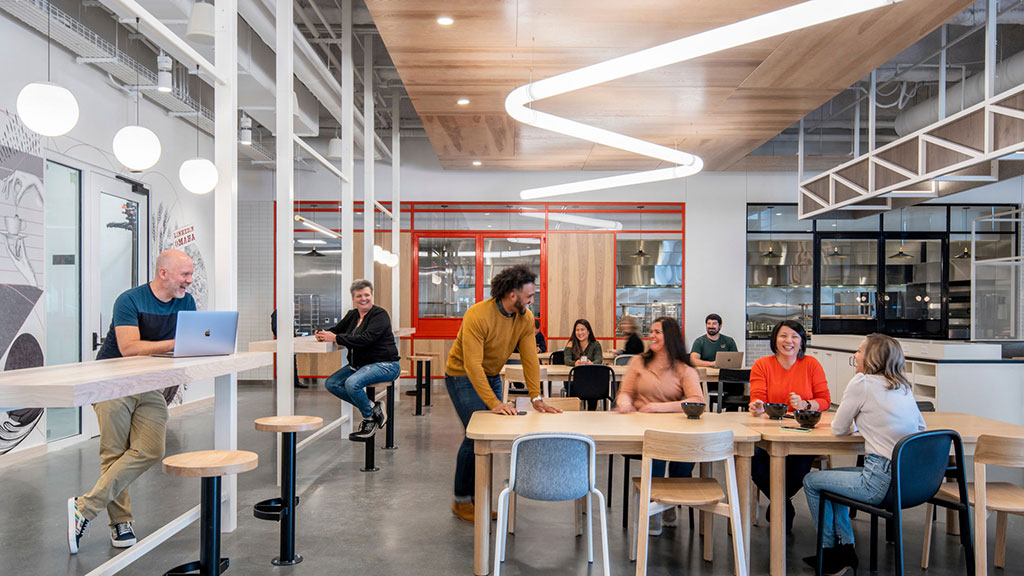What Gensler’s Recent U.S. Workplace Survey Reveals About What’s Working — and What’s Not — as Workers Return to the Office
December 06, 2022 | By Janet Pogue McLaurin, Anita Grabowska
Editor’s Note: This blog is part of our blog series exploring insights from Gensler’s 2022 Workplace Survey findings.
The recent and widespread layoffs in the technology sector are the latest reminder that companies of all kinds across the globe are facing strong economic headwinds. This comes on the heels of a significant recalibration of the role the workplace can play in attracting people back to the office — and indeed the positive role a return to the office plays in creating vibrant cities. We’re seeing companies flee older Class B and C buildings for high-quality Class A offices that are in great locations, and we’re noticing an increase in demand for hospitality-like amenities in and around these buildings — all in an effort to make the office feel like a destination rather than an obligation.
Amid this backdrop, we surveyed 2,000 U.S. workers to understand how these shifts are impacting their opinion of the office. For those looking to incentivize vs. mandate the return, can workplace design draw people back? Our data suggests the right quality and mix of spaces could certainly play a role — but there’s an even bigger picture to address.
Surprisingly, Gensler’s newest data on workplace performance reveals that employees say that they need to come into the office more than they currently are to maximize productivity, but something is holding them back. Not so surprisingly, the right mix of experiences could accelerate their return.
Here’s a look at some of the report’s key findings:
Employees say that they need to work in the office more often than currently to maximize productivity.
“Hybrid” is a new term since the pandemic, but the truth is, we’ve always been mobile — working both in and out of the office. The average percentage of time in the office has been 80% of a typical work week since 2016. However, we’ve measured that workers at the most innovative companies spend less time working in the office, and it had decreased to 67% of the work week right before the pandemic hit.
In our latest research, we not only asked how much time office workers are currently in the office but also how much time they ideally need to work in their company’s office space to maximize their individual and team productivity.
We found a surprising result in the data: on average, people say they need to spend more time at the office for productivity. And workers at the most innovative companies desire to work at the office more than average — back to the 67% level we measured pre-pandemic.
This begs the question: why aren’t workers coming in more frequently if that’s their ideal for their individual productivity and their team’s productivity?
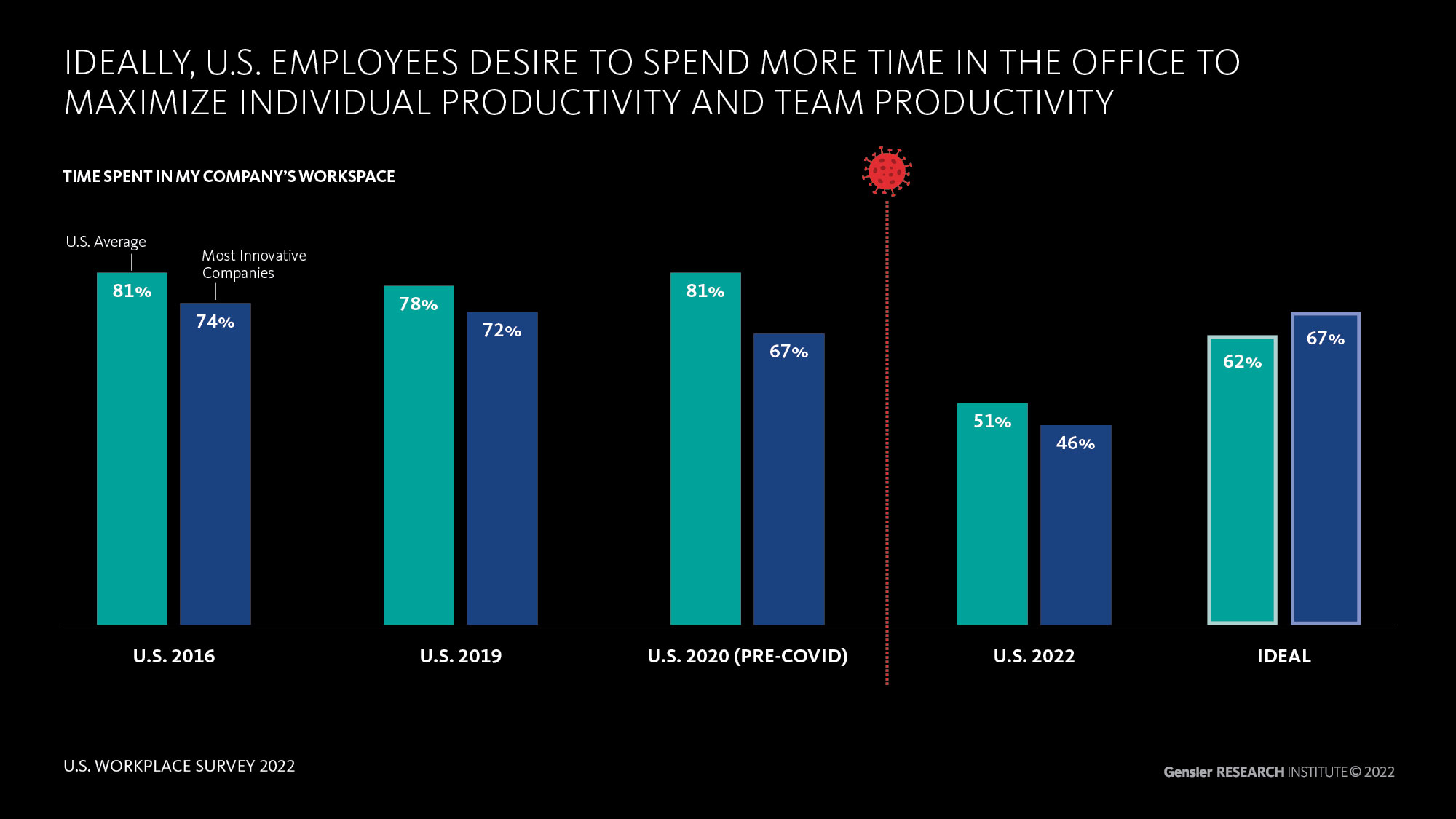
What’s working and what’s not working?
Part of the answer may be related to why workers have returned, and understanding the experiences and changing expectations of the role of the office. For some respondents, their companies encourage or even mandate a minimum amount of time in the office, while others have complete flexibility to decide.
Throughout the pandemic, we conducted 11 workplace research surveys — six alone in the U.S. — to capture how the pandemic has shaped the workplace experience. During this time, the top-ranked reason cited by employees to return to the office was “working in-person with my team/colleagues” — consistent across countries, generations, and industries, regardless of when they were surveyed. In our latest research, “to focus on my work” emerged as the top-ranked reason workers say they are coming into the office. Work activities based in the physical space, such as access to technology, scheduled meetings, and access to specific spaces, materials, and resources also rise to the top seven reasons.
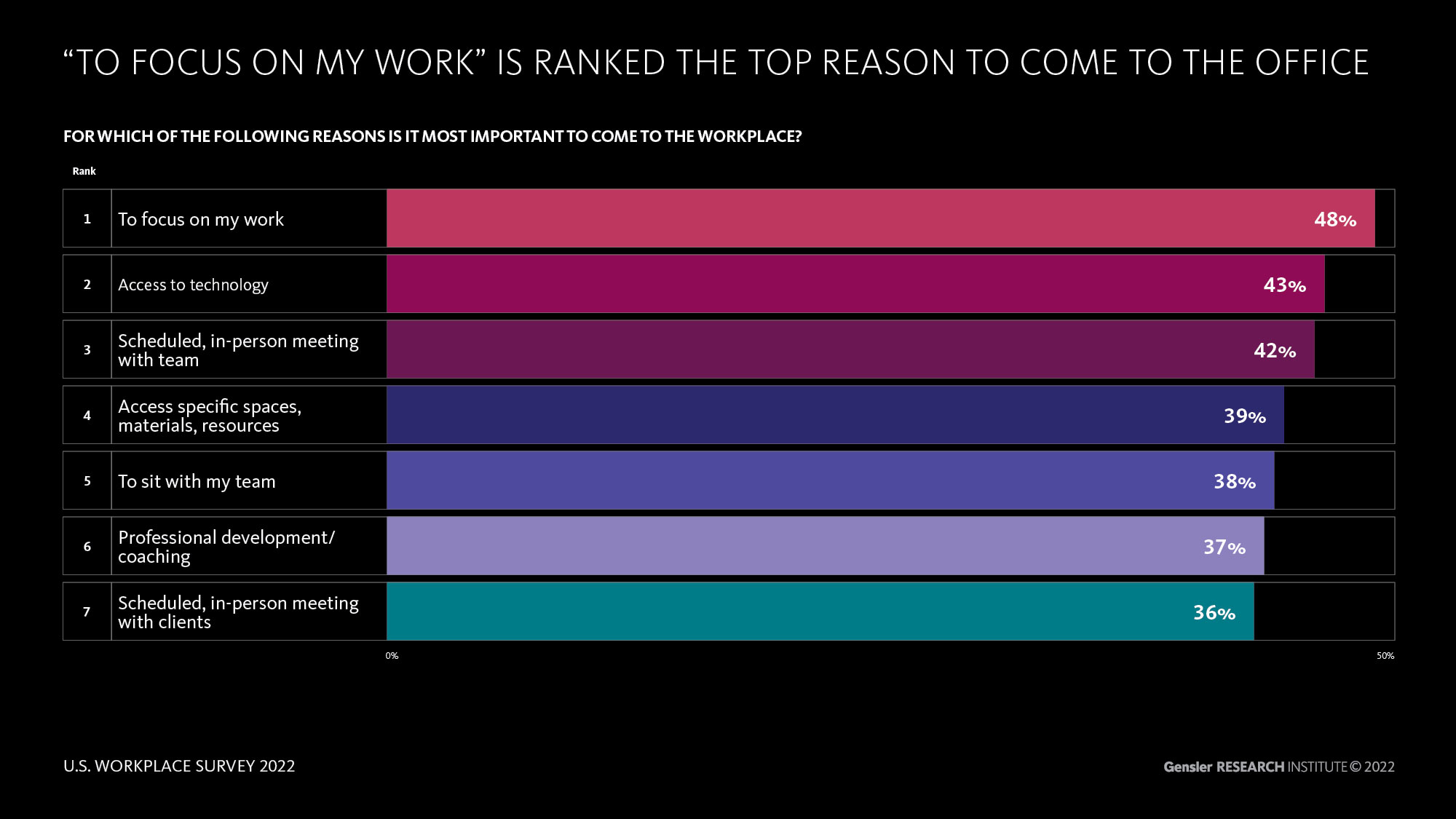
Gensler has been measuring workspace effectiveness since 2008, and we have seen it change over time. In our last pre-pandemic survey, we saw space effectiveness plummet across five work modes — working alone, working with others in person, working with others virtually, socializing, and learning. This drop signaled that the workplace was not working — noise, interruptions, distractions, and lack of privacy were all issues at that time.
Our recent workplace research shows that workers returning to the office rate the space effectiveness well for working with others in-person, learning, and socializing; however, ratings of workplace effectiveness for working alone and working with others virtually are at an all-time low.
The workplace doesn’t seem to be working for the critical work activity in which employees spend most of their time — working alone (34% of a typical work week). Workers say that 69% of working alone requires a high level of concentration. Providing the right physical work environment, which minimizes noise, distractions, and interruptions, is important to keep people focused on their work and working at their best.
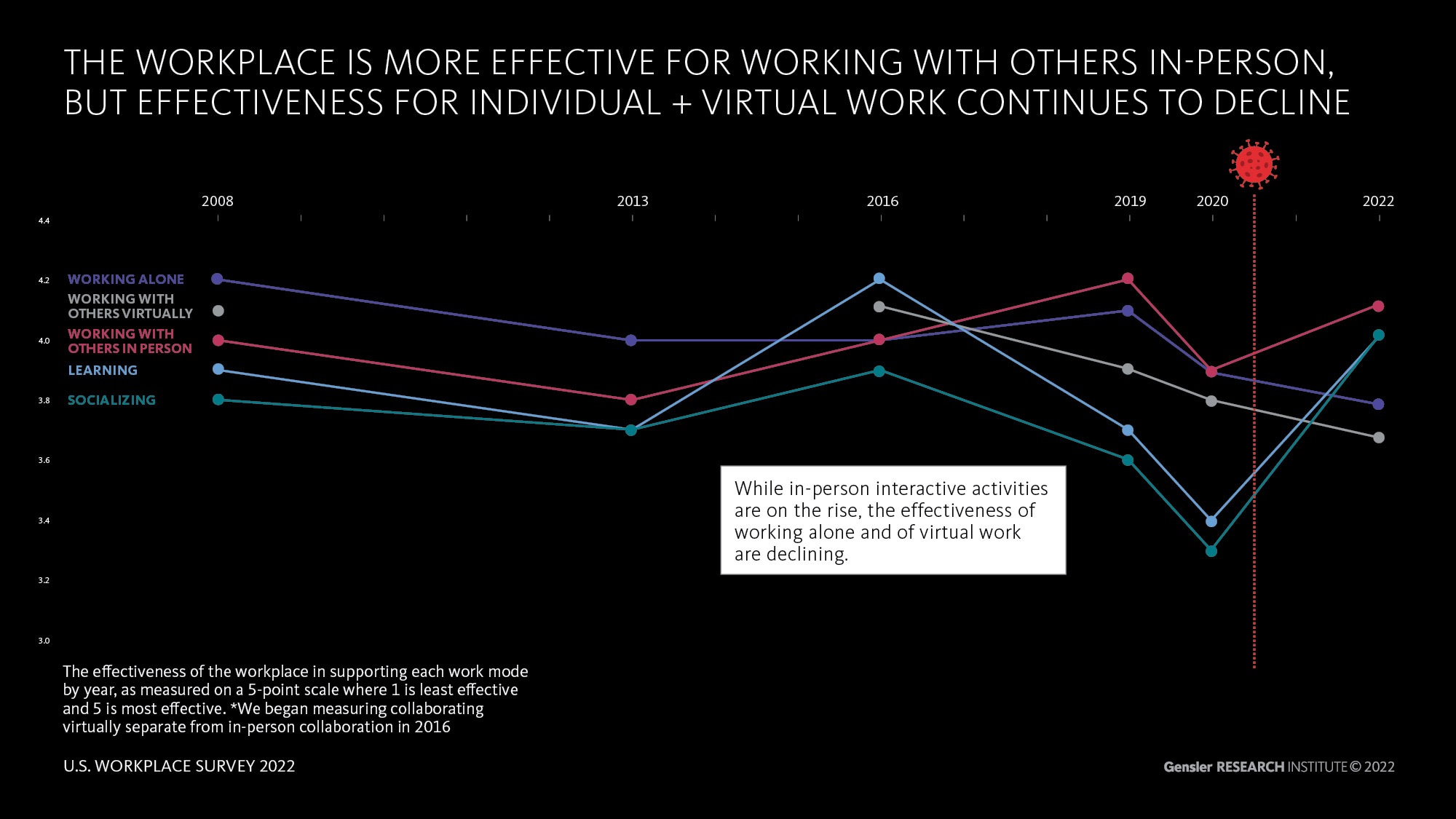
A new mix of work experiences could bring more employees back to the office more often.
In addition to an effective workplace that optimizes productive work, it’s clear that office workers seek a different mix of experiences from their work environment. Before the pandemic, the workplace was on a trajectory toward diversifying work settings and experiences to match the dynamic nature of work.
In a research survey format, it’s difficult to ask employees what they wish they had if they don’t know what’s possible. In our survey, we described eight everyday experiences that respondents could relate to — ranging from library, conference center, residential, to a boutique hotel. Respondents could create their ideal mix by toggling to 100%.
We found another surprise in the data: When we asked workers if their company provided their ideal work experience mix, would they be willing to come into the office more often, 42% said they would return one day/week more, and another 24% said they would return full-time to the office. In total, 83% of employees would willingly return more often for their ideal mix of experiences. We excluded full-time office workers from answering this question.
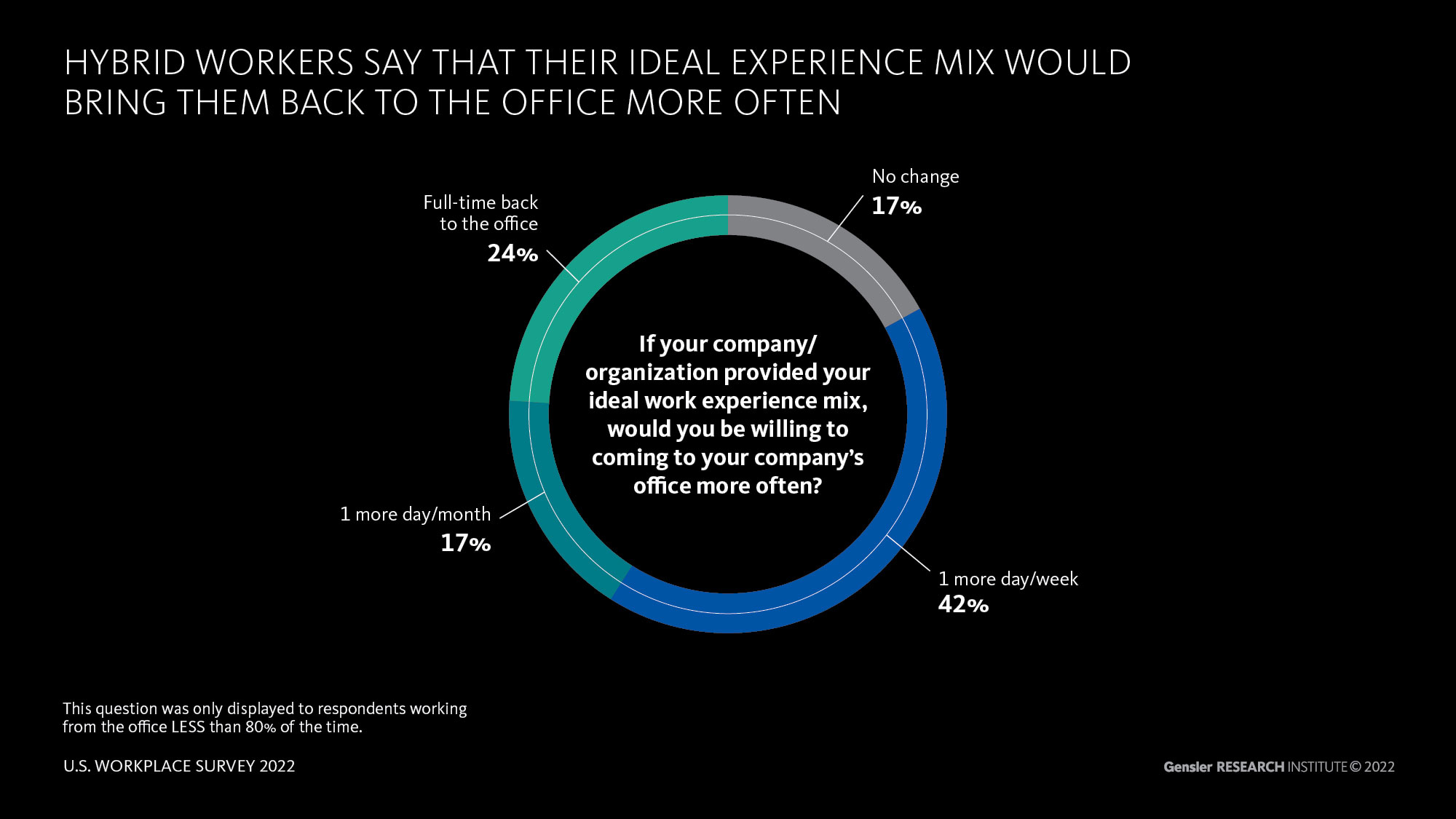
What spaces have the greatest impact?
The data showed that spaces for individual quiet work, such as quiet zones, focus rooms, and rest spaces, as well as spaces for creative group work, such as innovation hubs, maker spaces, and dedicated team rooms, positively impacted space effectiveness and experience scores, and differentiated the “highest performing workplaces” from the lowest performing ones.
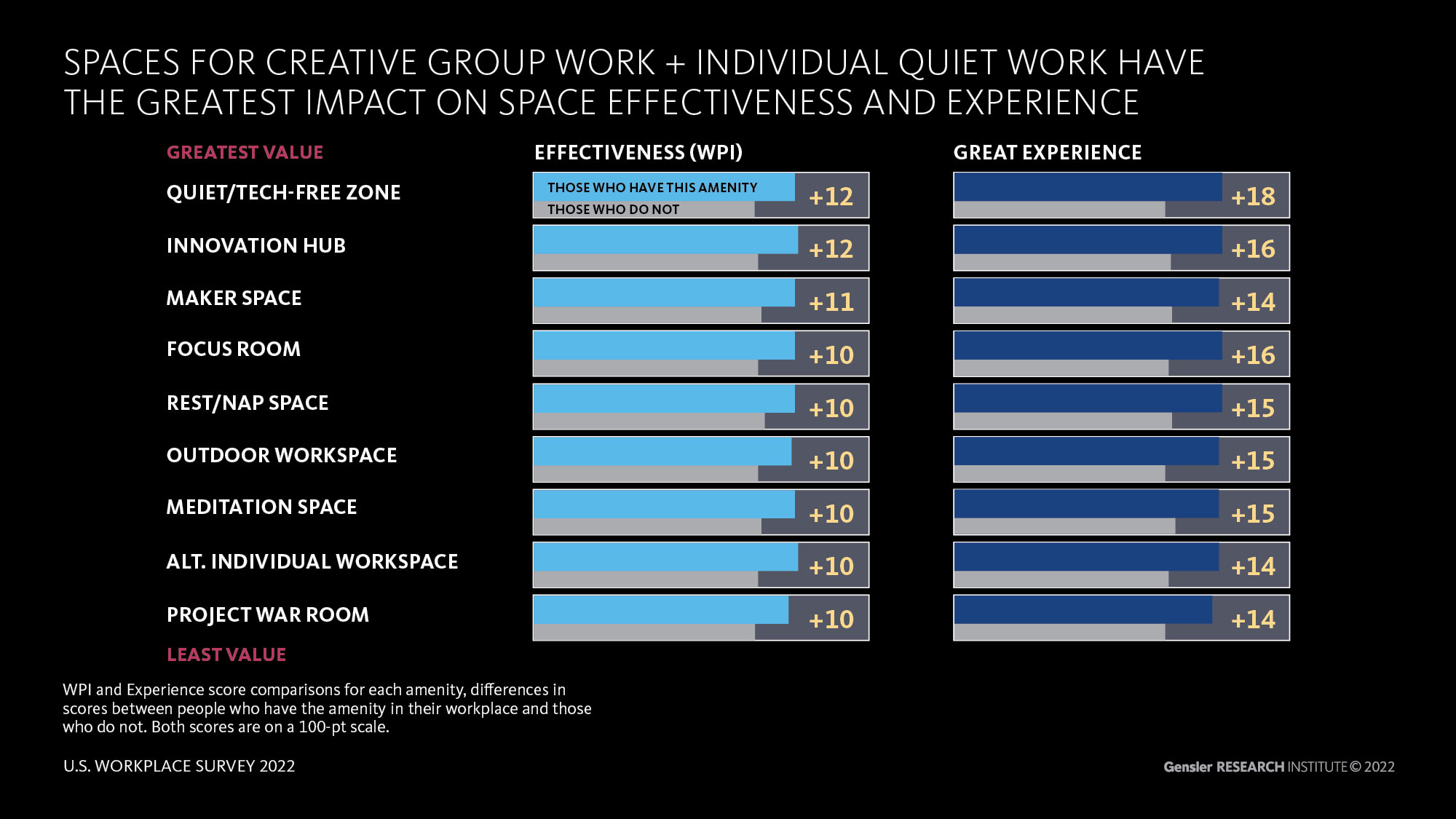
Companies that provide both effective space AND a great work experience are more likely to be located in amenity-rich neighborhoods. These workers have access to a wider diversity of amenities — ranging from coffee shops and outdoor spaces to eateries and grocery stores, either on-site or near the office.
High-performing workplaces drive great experience and organizational outcomes.
We know from our past research that it is essential to first provide a functional and effective space and then overlay a great work experience. Ultimately, workplaces that are perceived as welcoming, beautiful, easy to navigate, have controllable noise levels, and are equipped with the latest technology drive the best experience. Together, effectiveness and experience can shape the organizational outcomes that ultimately drive business performance.
High-performing workplaces are highly correlated with better individual, team, and organizational outcomes. Office workers in high-performing workplaces are almost twice as likely to report that the office positively contributes to their personal well-being, career advancement, and job satisfaction.
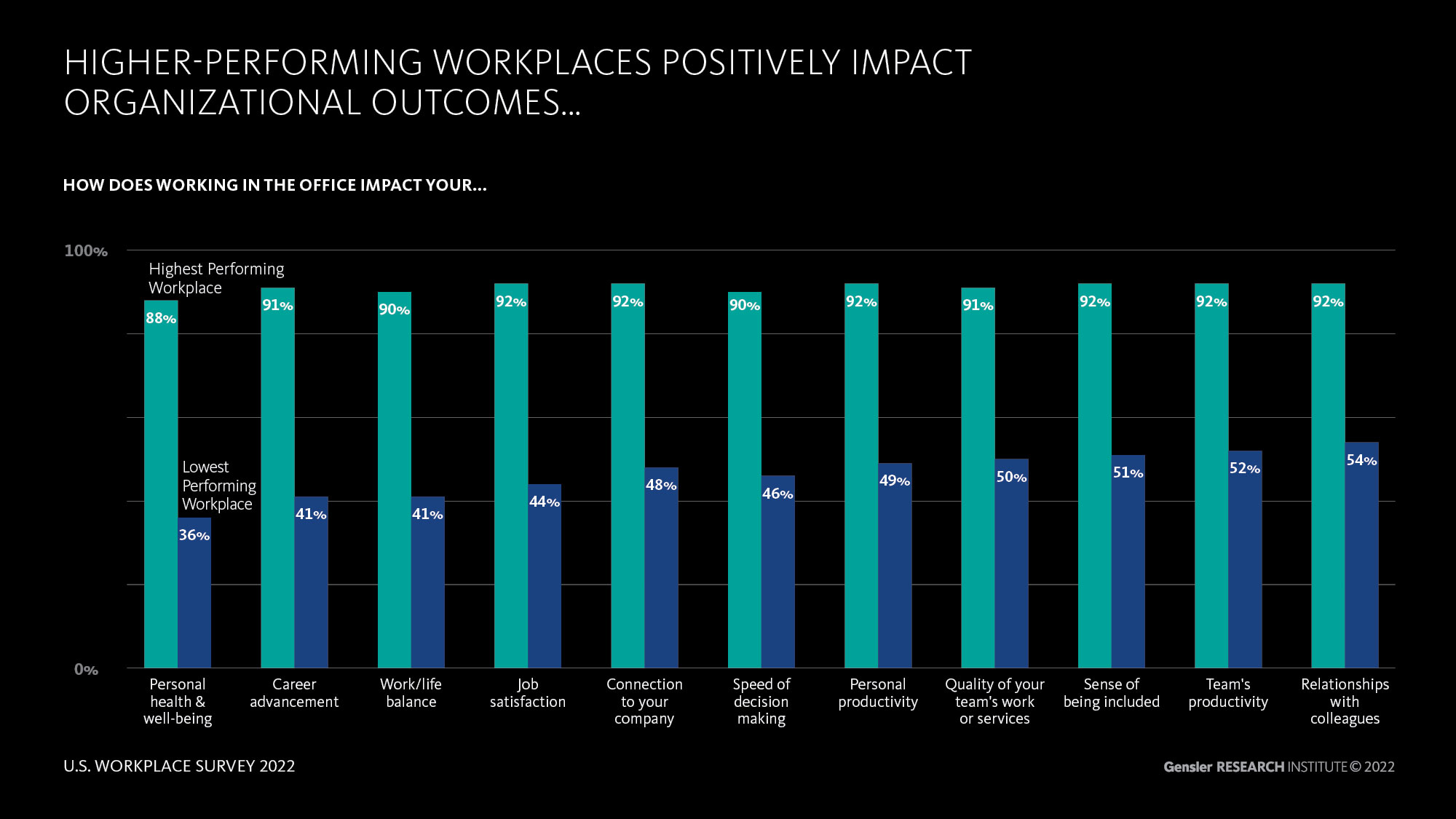
The workplace can be a critical tool in talent attraction and retention, as well as driving performance and business outcomes. The right mix of experiences is critical, and this, in turn, could draw employees back to the office more often.
Download the full U.S. Workplace Survey, Fall 2022 briefing to explore more insights. Stay tuned for additional blogs in this series.
For media inquiries, email .
